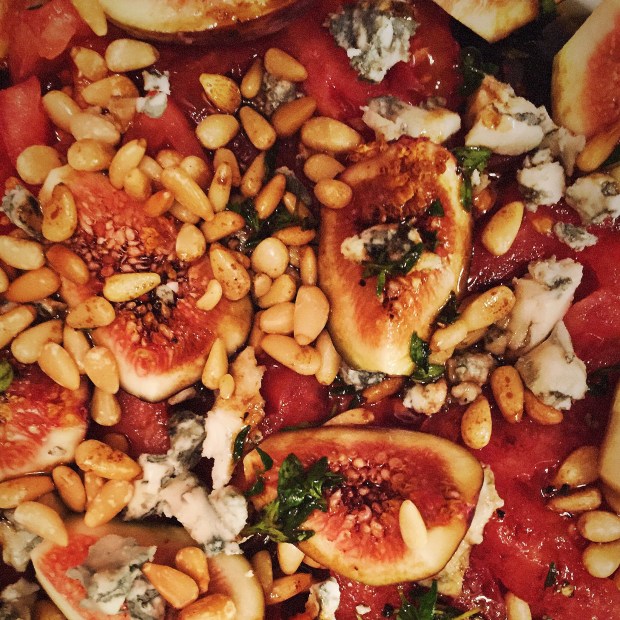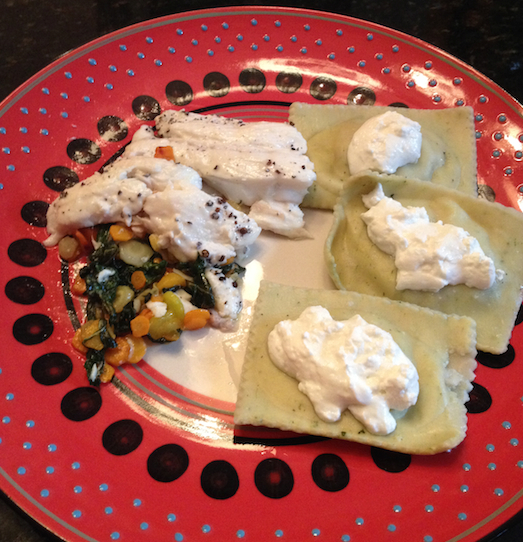
It’s peach season. Does anything else need to be said? This is the time of year to grab a juicy peach and eat it while standing over the sink while it drips all over you, or to slice one into your breakfast cereal (or try it combined with cucumber and lemon for a summery new twist), or to make into a cake that is as pretty as it is delicious.
Now, we don’t make desserts very often, because, really, nobody needs to take a simple and perfect ingredient like a peach and add sugar and butter and unbleached wheat flour to it to make it better. A ripe peach is already perfect. But every once in awhile, say once every three months or so, we veer away from simplicity and make a cake and enjoy every last crumb of it.
Ingredients:
- 3 large peaches
- 4 egg yolks, at room temperature
- 2⁄3 cup buttermilk (the magic ingredient that adds tang and moisture)
- 1½ teaspoons vanilla
- 1 1/2 cups cake flour
- ½ cup almond flour, plus extra for dusting the cake pan
- 1 cup sugar
- 1 tablespoon baking powder
- ½ teaspoon salt
- 4 ounces (1 stick) unsalted butter, at room temperature
- ½ cup sliced almonds, lightly toasted
Directions:
Preheat oven to 350°F.
Grease and flour (with almond flour) a 9-inch cake pan.
Peel the peaches, cut in half and remove the pits, and chop coarsely. You want pieces that hold their integrity. If you chop the peaches too small, you’ll end up with mush.
Remove about 1/3 of the chopped peaches to serve with the finished cake and refrigerate until ready to serve. Set the others aside.
Measure out all the buttermilk, and then use a ¼ cup measure to remove the amount you’ll need first. (Otherwise, you’ll get stuck figuring out the math for what 2/3 cup of buttermilk minus ¼ cup buttermilk means, and that will take some time for most of us, and will probably also yield an incorrect result and a headache.)
Whisk together the egg yolks, ¼ cup buttermilk, and vanilla, and set aside.
Mix the dry ingredients, preferably in a standing mixer, but you can also do this by hand.
Add the butter and remaining buttermilk and beat until light in color and fluffy looking. This will only take a couple of minutes in a stand mixer. Prepare for some arm work if you’re beating by hand, but it won’t require a helper, as long as the butter is at room temperature.
Scrape down the sides of the mixer or bowl then add the vanilla–egg–buttermilk mixture in a few batches, mixing well after each addition.
Fold in the reserved chopped peaches by hand and pour into the prepared cake pan. (Don’t forget to lick the spoon and the bowl, one of the quiet yet deeply intense pleasures of being the cook. Share if there’s anyone around, otherwise, rejoice in your solitude.)
The prepared cake, ready for the oven. You can see that the sides of the pan are dusted with almond flour.

Bake for 30–40 minutes or until a cake tester inserted near the center comes out clean. Be careful that the edges don’t burn, though—this is a very moist cake and the cake tester may pick up a couple of crumbs from the center. If you’re not sure, set your timer at 1-minute intervals while checking.
Place the pan on a rack to cool completely, then invert onto a plate. Lightly press the toasted almond slices onto the top of the cake.

Serve with the reserved peaches, and, if you’re feeling especially self-indulgent, ice cream. Vanilla would be fine, but we like the excuse to have a little bit of salted caramel gelato. If you serve gelato, buy the best. The cake (and you) deserve it.
P.S. This cake is a candidate for a flourless treatment, using just almond flour in place of the cake flour. It might be a little less light and more dense, but it would be easier on the conscience to eliminate unbleached white flour from, well, everything.
And here’s what a peach/cucumber breakfast looks like. Drizzle it with a little lemon and peach balsamic vinegar if you have some.






